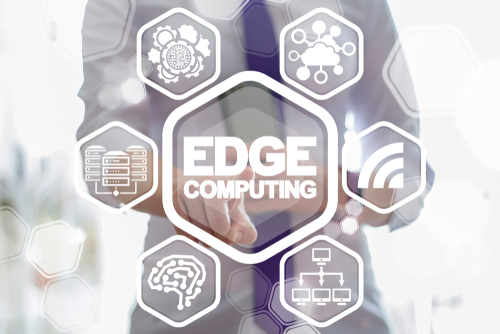According to a report global research firm IDC, 40% of business data will be saved, processed, served from the edge by 2021. Edge computing uses technology to improve application and download speeds for users by moving data geographically closer to their location. In this article, we discuss the advantages of edge computing and how it works.
While hyper-scale cloud computing is all about centralising data storage and processing in large datacentres, edge computing uses a dispersed network of highly-localised servers that are located closer to your end users. This could be key population centres that access your website or your offices.
On face value, edge computing might seem like a technological action backwards. After all, practically all modern services use the cloud to operate at scale. However, edge computing has numerous advantages, and it promises to change the way that information is gathered and utilised. Edge computing also opens the possibility of entirely new applications of internet-enabled technology.
How does edge computing work?
In a nutshell, edge computing utilises server hosting found at the physical source of information. These local computer systems process or serve data in your area, instead of passing workloads to another city or country over intermediary ISP networks which may be slow and congested.
A key advantage of edge computing is its speed. The fastest speed that data can travel is the speed of light, so reducing the distance between the user and the server is a simple way to improve speed. Edge computing has therefore been adopted for real-time data processing, particularly Artificial Intelligence (AI) where immediate decisions must be made.
Edge computing works alongside ‘fog computing’, where information processing happens at the regional network level. A typical edge/fog/cloud design, for that reason, would see some data gathered and used at the edge, offering speedy local results; fog servers processing the next level of information (that could drain the resources of an edge computer system); with cloud computing utilized for top-level content storage and analysis.
What is edge computing useful for?
Far from undoing what the cloud has attained, edge computing is a complementary technology. In particular, its latency minimisation is particularly useful in geographically disparate applications such as automotive technology, artificial intelligence, content distribution and smart cities.
A key driver of edge computing is innovation in Internet of Things (IoT) technology, deployed in homes and businesses around the world. Gartner reports that by 2020 IoT devices (sensing units, video cameras, and so on) will grow to more than 20 billion. With much data to collect and process, IoT devices cannot rely on traditional centralised cloud computing systems as they demand speed and availability. With edge computing, processing can occur at the source of the data, dramatically minimising response times.
Limited accessibility is another problem that edge computing can help mitigate. Cloud computing requires a quick, always-on connection to be of any use. Unfortunately, a reliable internet connection isn’t always useful or readily available, whether due to geographical location or hardware limitations.
Conclusion
Quicker decision-making, lower expenses and faster data processing are all notable advantages that edge computing brings to the table. As technology continues to evolve and companies embrace the edge, we are excited to see how Australia’s internet landscape changes.

